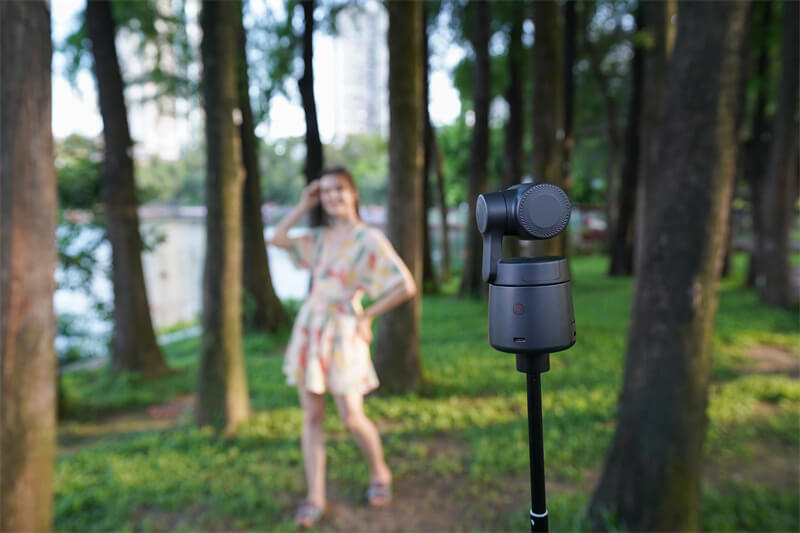HDMI Vs. SDI Vs. NDI: What are the Differences?

In a world where live streaming has emerged as a profession for many, HDMI, SDI, and NDI, have become the most popular video signal standards. Each one of them shares some differences and similarities. If you are new to live streaming and want to know more or explore deeper about HDMI vs. SDI or NDI vs. HDMI, you are at the right place. You will be familiar with all three video signal standards along with the OBSBOT Tail Air NDI streaming camera for a better live streaming experience.
Part 1: Overview of HDMI
HDMI is everywhere! It has become a key digital component in our modern lifestyle for connecting multiple devices simultaneously. Let’s get to know the detailed overview of HDMI now.
What's HDMI?
HDMI or high-definition multimedia interface utilizes ANSI/CTA-861-H and is widely used for the transfer of high-definition audio and video from a source like a computer and TV box to a TV monitor, computer, or projector.
HDMI Connector Types
There are three common connector types:
- Standard HDMI: It contains 19 pins and supports video resolutions of up to 1080p.
- Mini HDMI: As the name implies, it’s a smaller version of the standard HDMI connector and comes with the same pins as the standard one. This kind of connector is used commonly in camcorders, DSLR cameras, and tablets.
- Micro HDMI: This is the smallest version of HDMI connector and is commonly used on GoPro, action cam, and other mobile devices.
Benefits of Using HDMI
- Delivers enhanced picture quality with improved contrast and saturation
- Transmits high bandwidth of audio and video signal with a single cable
- Pretty easy to use as it supports two-way communication and automatic configuration
- Offers lossless transmission with smooth signal quality
Part 2: Overview of SDI
After HDMI, SDI is another popular protocol for digital video transmission. It was standardized by the Society of Motion Picture and Television Engineers in 1989.
What's SDI?
SDI refers to the Serial Digital Interface that helps in the transmission of high-quality uncompressed video signals using coaxial or fiber optic cabling. It is highly used in the professional video production industry.
Common SDI Standards
Every SDI cable is equipped with a connector to lock the device when connected to another. The following are the commonly used SDI standards:
- HD-SDI: It supports the transmitting & receiving of audio bitrate at 1.5 Gbps. This type was primarily used for 720p or 1080i video formats.
- Dual-Link HDI-SDI: This was introduced in 2002 and was primarily used for 1080p video formats. It supports the transmission and receiving of audio at a bitrate of dual 1.5 Gbps. Eventually, making it a combined 3 Gbps.
- 3G-SDI: It supports audio bitrate transmission and receiving at 3 Gbps and is primarily used for 1080p video formats.
- 6G-SDI: Introduced in 2015, it supports transmission and receiving of audio bitrate at 6 Gbps. This is ideally used for 2160p video formats at 30 FPS and 1080p video formats at 60 FPS.
- 12G-SDI: Introduced in the same year as 6G-SDI, this supports audio bitrate transfer and receiving at 12 Gbps. It is ideally used for 2160p at 60 FPS.
SDI cables are available in different versions and the version selected by you will determine the maximum resolution and frame rate of the output.
Benefits of Using SDI
- Capable of sending video data in uncompressed format resulting in a high-definition multimedia interface.
- SDI is pre-equipped with the error correction feature to ensure a smooth video transmission
- Because of the low latency it delivers, the time between receiving and sending the signal is fast.
- SDI will transmit video under long distance without causing any defect in the quality
Part 3: Overview of NDI
NDI, the network device interface can be used to establish the connection between two or multiple video devices over an ethernet network in real time. Developed by NewTek, this video-over-IP protocol supports low latency, high-quality video, and audio streaming.
Benefits of NDI
- Enables the use of existing infrastructure for video transmission without needing any cables
- Supports low-latency transmission and is considered easy to use because it fits into the existing network setup
- It’s scalable enough to be compatible with large-scale uses such as video conferencing
- NDI is so flexible that it supports plenty of video formats and resolutions without any hassle, making it appropriate to use in different environments.
Explore more details about the NDI Streaming Solution.
Bonus: The Best NDI Streaming Camera - OBSBOT Tail Air Streaming Camera
Until now, we have been trying to make you aware of the different video transmission standards and understand SDI vs. HDMI quality or NDI. But now, it's time to know about the ideal equipment to improve the live streaming experience.
OBSBOT Tail Air enables a smooth remote live-streaming experience and emerged as a popular tool for content creators as well. It is packed with AI technology and a multi-cam setup to take your live-streaming experience to the next level.
Features:
- NDI streaming minimizes latency, ensuring that the video and audio feed reaches the streaming destination in near real-time.
- Accessible and easier to integrate into existing live streaming setups.
- Provides 4K shooting capability to record or stream high-quality videos
- Comes with AI auto-tracking to keep a record of fast-paced moving objects easily.
- Multiple built-in interfaces, offering extensive compatibility.
Part 4: HDMI Vs. SDI Vs. NDI: Which One is the Best for Live Streaming
To figure out the best live streaming standard, we recommend NDI if you are streaming over the internet in real-time. Although it’s convenient integrating with your existing network infrastructure gonna be a bit complex. On the other hand, HDMI and SDI are also great options but considering from the professional point of view, SDI works better and HDMI should be good for home setup.
For high-quality and professional video production, there’s no standard better than SDI. However, if you don't want to use cables, NDI can be a better option as it uses the existing network infrastructure.
Part 5: FAQs about HDMI Vs. SDI Vs. NDI
We've put together a list of frequently asked questions to help you decide which video interface is best for you.
1. Should I Use SDI or HDMI?
In terms of professional video production, SDI is best recommended because it’s compatible with 8K resolution while the maximum compatibility of HDMI is 4K.
2. Can SDI Transmit 4K?
A big yes! It can transmit 4K videos easily if you use the right standard. For instance, 6G and 12G SDI are most suitable for 4k video.
3. Is SDI Better than NDI?
Both have their pros and cons. It’s obvious SDI is more powerful in terms of live streaming, NDI eases network-based live streaming such as video conferencing or remote video production.
Conclusion
If you were unaware of the differences between SDI Vs NDI or HDMI Vs. SDI video signals, here we have shared everything to keep your doubts clear. No matter which technology you use among them, the end decision will depend on your needs only.















